Natural Environment
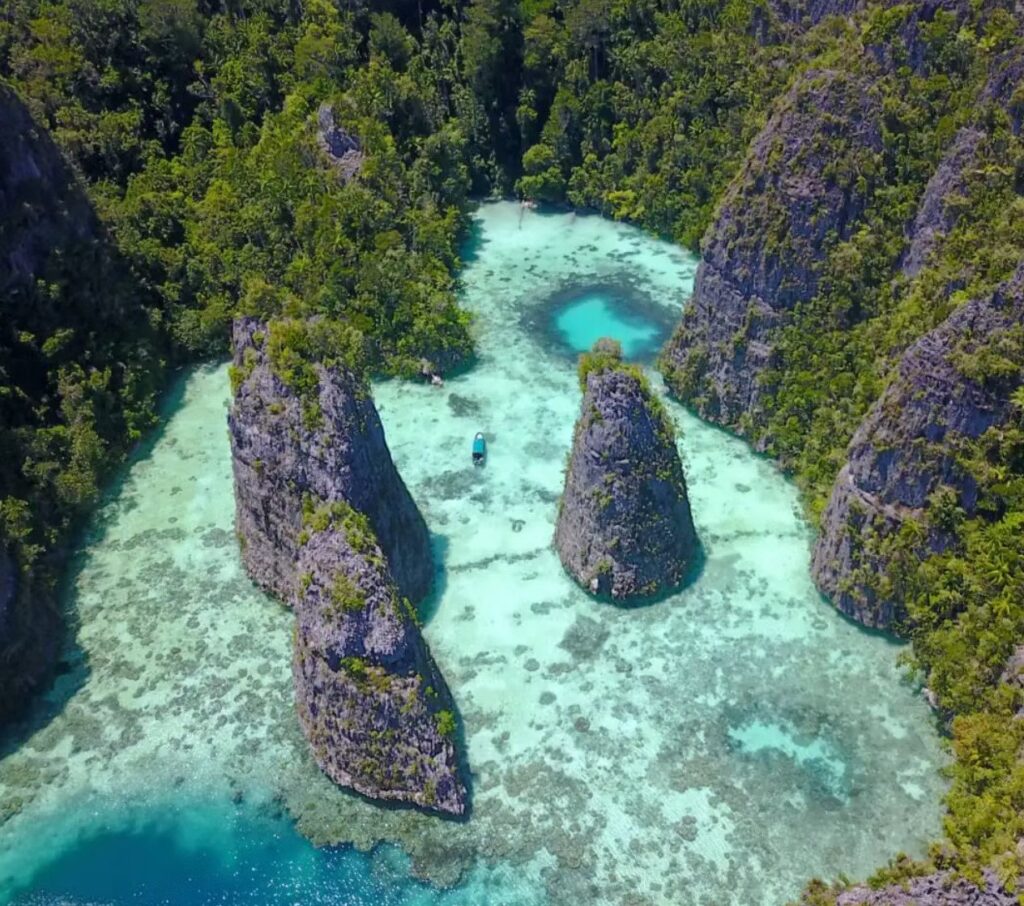
Description: Archipelago Raja Ampat Credit:@shantie_syifa
Raja Ampat (in literal meaning is The Four Kings) is an archipelago consisting of more than 1000 islands off the coast of West Papua province, the east part of Indonesia and four main islands, Waigeo, Batanta, Salawati, and Misool. (Tripcetera)
A lot of people, even from Indonesia, often look at and think of West Papua as a small region. This is mostly because of the very limited information about West Papua reaches them. This limited information becomes even more limited due to the insurgency that takes place there and the government’s rigorous effort to prevent the spread of such information to the outside world. As a result, many people only know West Papua as an insignificant place with a homogeneous population.
The fact is that West Papua is a large and diverse region. It is located in the Island of Papua, which is the second largest island on earth after Greenland. The total area of the island is 421,981 square kilometer, more than one-fifth of Indonesia’s total land area. Although West Papua is sparsely populated and primarily rural, hundreds of indigenous communities live there and more than 200 different languages are spoken there. So, for people who think that West Papua is just a small part of Indonesia, the next time they think of it, it’s better for them to think it big. (West Papua Update)
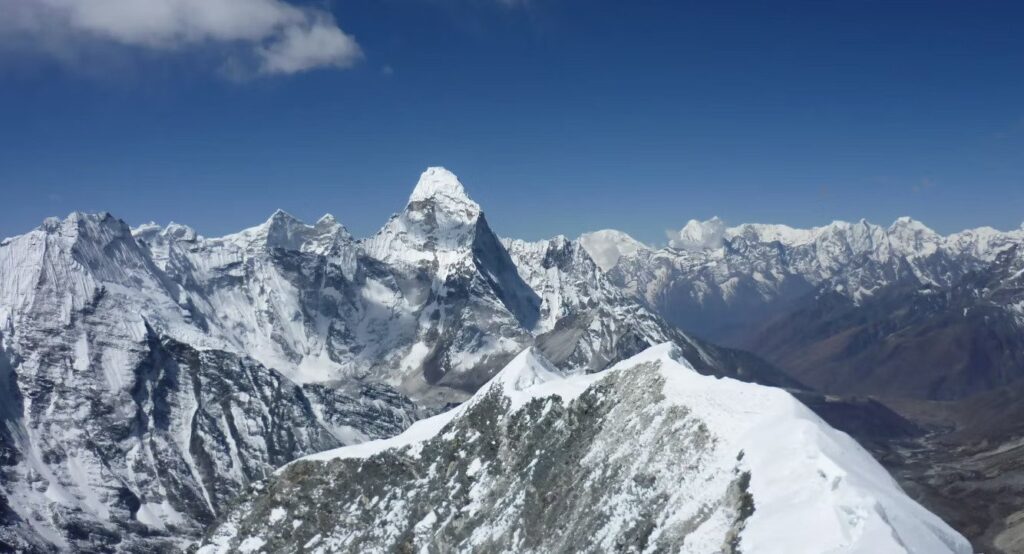
Description: Trikora’s Pick | Credit: West Papua Story
The mountainous terrain has supported diversity because of the isolation and there are unique mountain fauna and flora and different species at different elevations. The lowlands are jungles whose trees are not that different from those of Southeast Asia. Yet the animals are often very different – cassowaries instead of tapirs, and marsupial cuscus instead of monkeys.
The greatest diversity of animal life occurs at around 1500m above sea level. The ancestors of many of the marsupials found in these forests were derived from Australia some five million years ago. As Australia dried out they vanished from that continent, but they continued to thrive and evolve producing a highly distinctive fauna. Birds of paradise and bowerbirds also abound there. As you go higher the forests get mossier and the air colder. By the time you have reached 3000m above sea level, the forests are stunted and wreathed in epiphytes. It’s a formation known as elfin woodland.
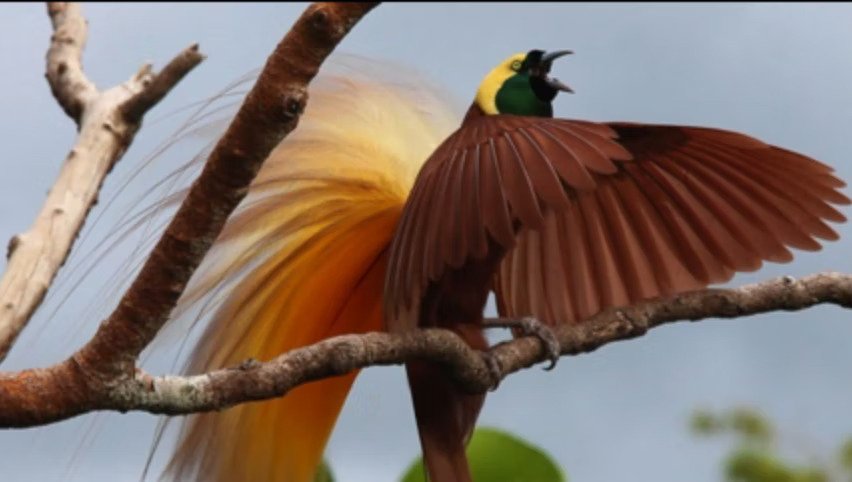
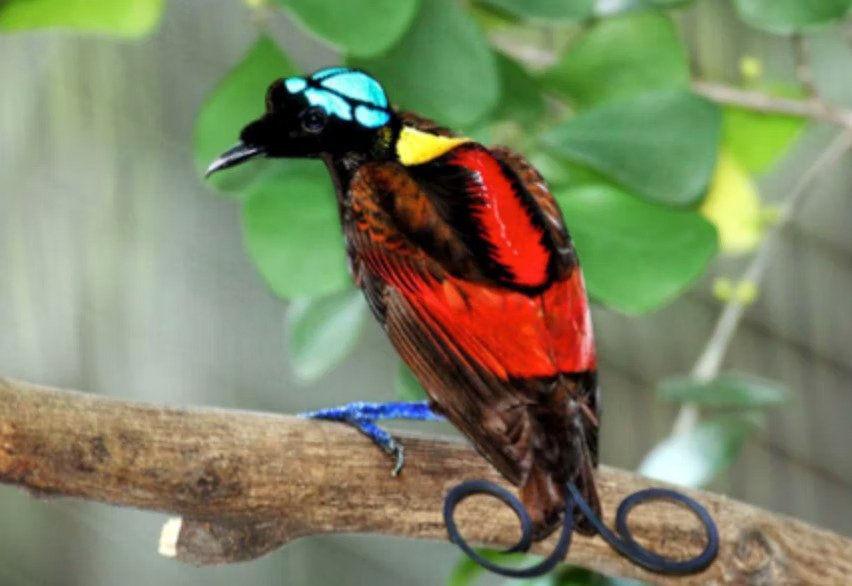
Description: Birds of paradise | Credit: Macaulay Library
Animals of West Papua are famous for their exceptional features. Birds of paradise are no exception, thanks to their spectacular plumes. Known as cenderawasih in Indonesian, the birds’ elusive beauty makes them curious subjects of scientific studies and photography projects.
The birds of paradise were grouped under the Paradisaeidae family, which consists of about 45 species that are spread in Papua New Guinea, eastern Indonesia, and eastern Australia. Most of these species live in New Guinea Island, and some of the most striking ones make West Papua their home. (West Papua Story)
Anthropological History

Description: Dani people | Credit: Udomunich
West Papua is famous for its unforgiving topography, composed mostly of mountainous terrains, many indigenous people of West Papua live in inaccessible areas remote from outside influences. As a result, many distinct ethnic groups and tribes emerged within contained areas, each having its own unique cultural and linguistic heritage. (West Papua Story)
Each region in West Papua has a unique language according to the culture that develops in the area. Generally, these languages are no longer used as official languages; most languages are no longer used in everyday speech. However, in some events or small communities, we can still find these languages. (West Papuan Diary)
Bahasa Indonesia, the Indonesian language, is the official language in this province. Papuan Malay is used as the lingua franca in West Papua Province, used as both a trade language or in inter-ethnic communication. There are many local languages in West Papua, and the number of local languages used by the native people reaches 265 languages. (Wisma Bahasa)
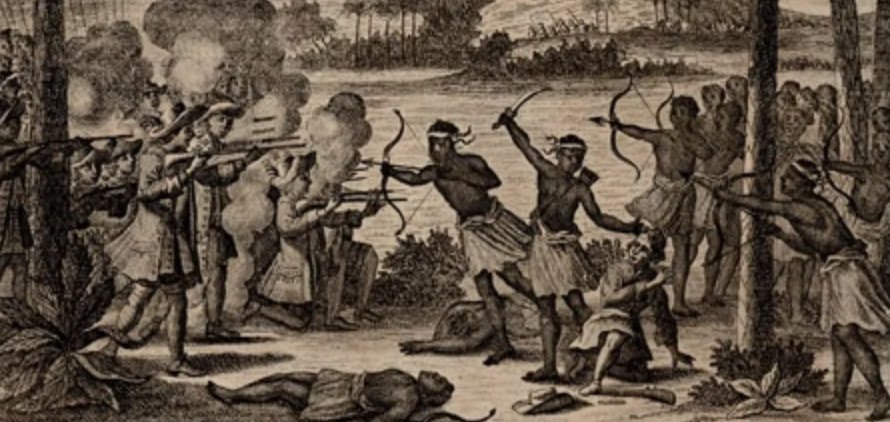
Description: Dutch colonisers in West Papua | Credit: unknown
West Papua was originally populated by Melanesian people some tens of thousands of years ago. After little contact with the Western world, it was formally colonised by the Netherlands in 1898.
The islands that now make up Indonesia were also colonised by the Dutch but when the Republic of Indonesia became an independent nation state in 1949, West Papua did not join the country.
The Dutch government recognised that West Papua was geographically, ethnically and culturally very different to Indonesia and so the Dutch government began preparing West Papua for its own independence throughout the 1950s. At the end of 1961, West Papua held a Congress at which its people declared independence, and raised their new flag – the Morning Star.
But within months the dream was dead. The Indonesian government wanted all of the former Dutch colonies in the Asia-Pacific region and the Indonesian military soon invaded West Papua. Conflict broke out between the Netherlands, Indonesia and the indigenous population regarding control of the territory. Unable to secure enough support for its invasion of West Papua, the Indonesian government turned to the Soviet Union for help. It was the height of the Cold War and the US government was worried that Indonesia seeking Soviet Union support might increase the spread of communism in South East Asia. (Free West Papua)
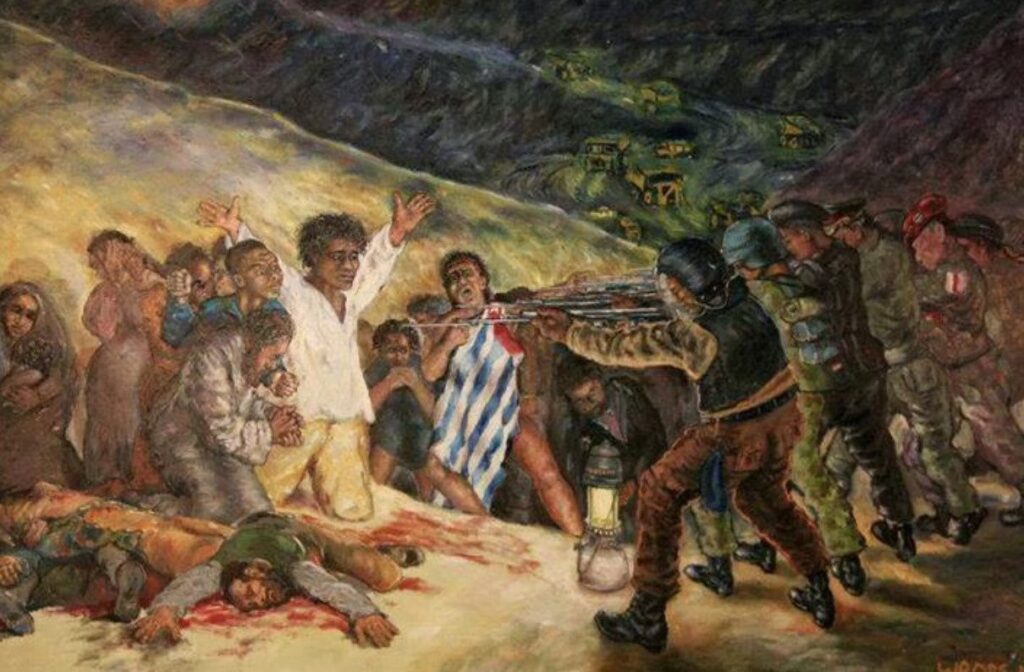
Description: Indonesian colonisers in West Papua by Peter Woods, an Australian white man, previously a Christian pastor, who has for decades been an advocate for West Papua. | Credit: Suarakolaitaga
When Indonesia invaded West Papua in 1962, new anthropological research in the region was brought to a standstill. Instead, outdated anthropology and museum ethnography were mobilized to bring West Papua into the national fold. In the Provincial Museum in West Papua’s capital of Jayapura, for example, Papuan culture is depicted as being part of a unified, but regionally diverse, Indonesian culture. The message: “we are distinctive as a province, but we are one with the rest of the nusantara (archipelago).” (Taylor, 1995)
As Papuan identity was reconfigured through such cultural engineering projects, anthropology was being used to paint Papuans as second-class citizens. According to a secondary school cultural history textbook, many cultures in Indonesia still live in the age of prehistory. (Koentjaraningrat, 1954) Although the text was published before West Papua was recognized as part of Indonesia, most Indonesians today continue to regard Papuans as stone-age savages.
While preservation of regional cultural identities continues to be a major part of Indonesian national ideology, the civilizing mission also continues to be a powerful force. The self-determination movement in West Papua that desires independence from Indonesia has been depicted in the media as a gang of savage terrorists (Kirksey & Roemajauw, 2002). Indonesian soldiers imagine that their role in the civilizing mission is to directly combat these “wild” Papuans. (Kirksey, 2002) (Cultural Survival)
Society & Culture

Credit: West Papua Support Network and POSSIBLE FUTURES, featured art by Peter Woods – West Papua Solidarity Gallery
The West Papuan struggle for self-determination is one of the lesser-known human rights issues in the world. This is mostly due to a systemic information blockade imposed by the Indonesian Government, alongside vilification tactics to invalidate the people’s campaigns for independence.
In this situation, international advocates are stepping up to popularize the important issues in West Papua that have yet to be seen and heard by the international community. Within Indonesia, solidarity groups are steadfast in holding the Indonesian Government accountable for its atrocities in Papua despite political persecution from the TNI / POLRI. (Mederka Secretariat)
Video: Forgotten Bird of Paradise – Undercover West Papua Documentary
The majority of the indigenous population still live traditional subsistence lifestyles. Tribes living high in the mountainous interior practice small-scale agriculture, cultivating yams and sweet potatoes and keeping pigs. In the coastal lowlands, a hunter-gatherer lifestyle is led, with sago and fish making up large parts of the diet.
Forest exploitation by foreign-owned logging companies has been extensive, particularly along the north coast, in parts of the southern region, and in New Britain and New Ireland. At times logs have accounted for one-tenth of the value of national exports, but that proportion fell by about half during the Asian economic crisis of the late 1990s and only recovered slowly in the first decade of the 21st century. Forestry remains a controversial industry, with logging companies developing connections with the political elite, and it was marked by corrupt practices including improperly issued licenses, mislabeled species, transfer pricing manipulation (the practice of hiding the real value of transactions—e.g., by undervaluing exports—in order to maximize profits), tax avoidance, environmental damage, and lack of reforestation.
While companies continue logging large swaths of pristine forest and replacing them with lucrative palm oil plantations, Indonesia is also harvesting West Papua’s wealth in minerals, and natural gas with the help of foreign companies. The American mining company Freeport-McMoRan extracted gold and copper for decades from the giant Grasberg mine. An international consortium led by BP operates the huge Tangguh natural gas field. (Free West Papua, Wikipedia
Unlike other cuisines of the region, people in West Papua do not make rice as their staple food. However, being rich in natural resources only means that the region has its own unique dish. While there is quite a large number of West Papuan traditional cuisine, perhaps nothing is as popular as Papeda. Typically served with delicious Yellow Fish Soup, this dish is incredibly delicious.
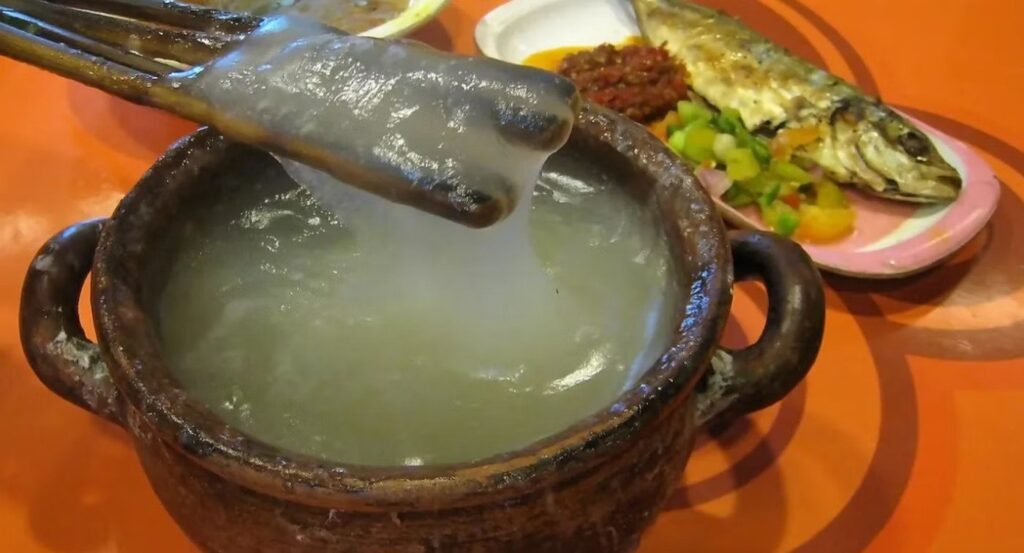
Description: Papeda served with yellow fish | Credit: West Papua Update
Besides papeda, sago worm is one of the most popular foods in West Papua. The Sago worm is found inside the sago tree and has a large and plump body. Sago worm has a scientific name of Rhynchophorus ferrugineus. When it has completely metamorphosed, the worm will grow to be a snout beetle.
Some Papuan likes to eat the sago worm raw or cook it on skewers to make satay. When it’s grilled, it has a crispy texture on the outside and a softer and chewy inside. With a high nutritional content, the Papuan eats the sago worm to reenergize and rejuvenate their body.

Description: Sago Worm Satay | Credit: West Papua Story
Blanc.O – Free West Papua (ft Franco)
Current Socioeconomic Crisis
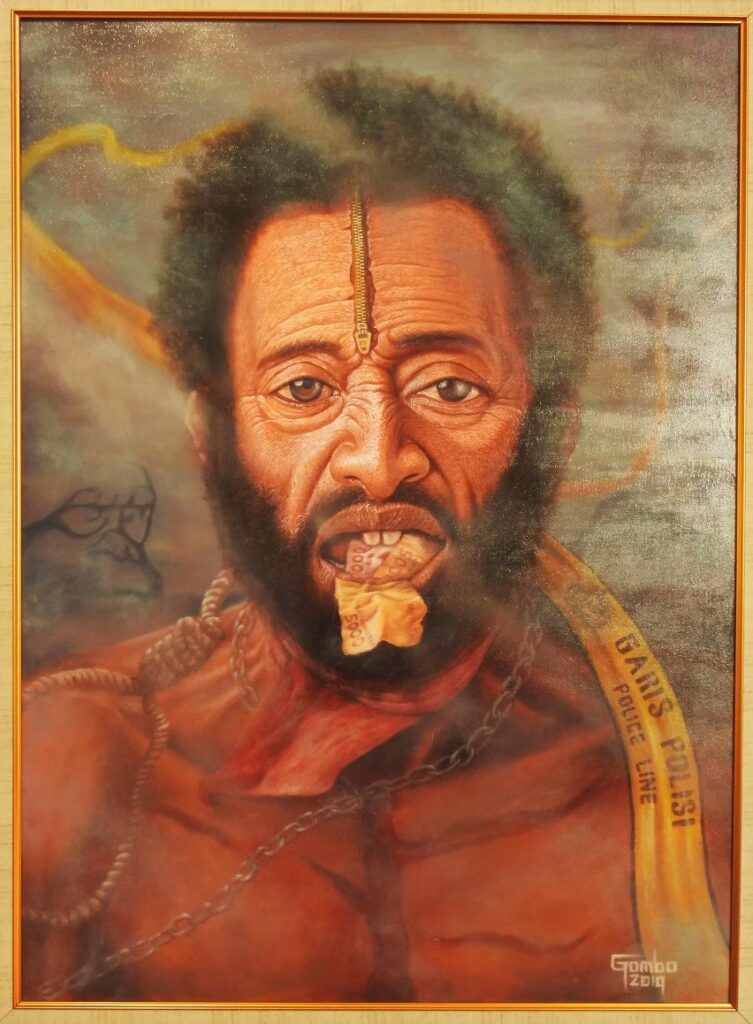
Art by: Yanto Gambo, 2019
Economic inequality is high despite West Papua’s abundant resources. There has been a movement for independence in West Papuan from Indonesia for half a century and the economics is exacerbating the problem faced by the West Papuan people.
There is a huge divide between the rural and the urban population in West Papua. Javanese constitute around 70% of the population in sizable towns and urban areas of the province. Yet in regional and remote areas where the indigenous Papuans are still the overwhelming majority, the indigenous people are largely excluded from the mainstream economy, let alone basic services such as education and healthcare.
Currently, Chevron and BP are carving up West Papua for oil and gas exploitation while deforestation and logging are executed at a terrifying pace. The economic exploitation of the land will spell disaster for Papuans, only deepening their poverty trap. The Grasberg mine discharges so much tailing into nearby waterways, around 230,000 tons daily, which arguably puts it in breach of national law. The World Bank no longer funds any such operations, and no developed country on earth disposes of their mining waste in such a manner.
The Australian Rio Tinto has a joint venture agreement with Freeport, the owners of Grasberg mine, which allows a large share of resource production. Most Australian financial institutions invest in Rio Tinto, which means that Australians are implicated too. To top it off, Australia equips, funds and trains an Indonesian counter terrorism squad called Detachment 88 that regularly kills and tortures peaceful West Papuan Independence activists. (Economic Students)
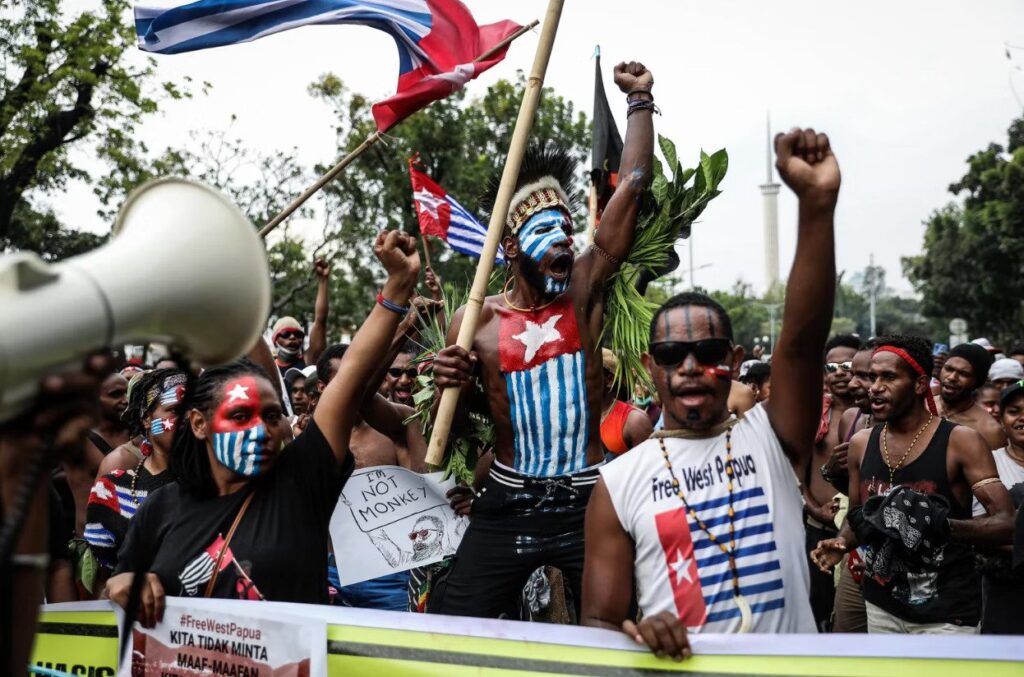
Description: Papuan students shout slogans during a rally in Jakarta on Aug. 28, 2019 supporting West Papua’s call for independence from Indonesia | Credit: Andrew Gal
The issue of human rights in West Papua has attracted increasing attention—both within Indonesia and internationally—in recent years. The global anti-racism movement has sparked a new discussion about West Papua, and helped campaigners reach more people than ever before. “I think [Black Lives Matter] enabled Papuans to speak of racism in a way that Indonesians and others can understand,” says Ligia Giay, who helps publish the newsletter Voices of Papua.
“Papuan Lives Matter” also pushed Indonesians to consider what’s happening in its easternmost region in the context of racism. Camellia Webb-Gannon, the coordinator of the West Papua Project at the University of Wollongong in Australia, says that the issue of race hasn’t historically been discussed as a point of tension in West Papua. Previously, the struggle has been talked about in terms of colonialism, resource exploitation and human rights abuses. “They’re starting to see this in light of this international discourse around racism that’s happening in the U.S. in particular,” she says. “Suddenly these links have been made in West Papua too, and it’s taking off, so then a lot of Indonesians are picking up on it.” (TIME)
